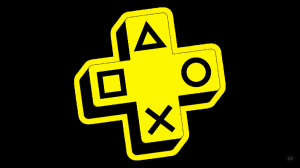Tomb Raider fans have a variety of amazing games to play courtesy of Crystal Dynamics, but your options are a bit more limited if you want to take things to the tabletop. Luckily, Square Enix has got you covered with Tomb Raider Legends: The Board Game, which puts you and three other explorers on a quest to recover an artifact and make it out with the vaunted prize in hand. Legends combines elements from across the franchise in a unique mix of strategy and card-based gameplay, and it does successfully make you feel like everyone’s favorite Tomb Raider, though it does feel at times like it doesn’t quite reach its full potential.
Videos by ComicBook.com
Tomb Raider Legends puts each player in the role of Lara Croft, represented by a small miniature and a character board that features a different version of the iconic character. The original Tomb Raider, Tomb Raider: Angel of Darkness, Tomb Raider Legend, and Tomb Raider Underworld are all represented on the character boards and area tiles, and the visuals on both will delight fans of the franchise.
The boards themselves are rather large, and while they are slick, it’s hard to not feel like they could have been streamlined and tweaked a bit to make better use of the space or decrease their substantial footprint overall. The game supports up to four players, but having those four large boards on the table eats up a ton of space, even if the central board doesn’t.

If you’ve got some space, however, you’ll find an entertaining mix of strategy and adventure, an adventure that allows anyone to pull out a victory, even if they’ve been trailing behind, due to the game’s two central mechanics. The first is the way action cards are put into play; players pick three of their action cards to lay out on the board, and you’ll flip one over each turn, but in sequential order. That means you’ll play an action card, and then go clockwise as each other player makes their action, and then you repeat the process two more times.
The other players can’t see your actions, so all of you will have to make your best guess in regards to what the other players will do and use raid cards you pick up along the way to help adapt on the fly. Actions range from allowing you to move to a new tile and hitting the tile to remove its threat to stealing a raid card from another player, but the splitting up of your actions means your carefully planned strategy could easily fall apart due to someone taking an action you didn’t expect.
Adding to this frenetic mix is how you move from tile to tile. Your ultimate goal is to make it from the start tile to the goal tile with the artifact card in hand, but before you can move to another tile, that tile’s Threat must be completely removed. The choice becomes, do you knock down the threat so you can move on your next turn, or do you let someone else do it for you so they can’t move ahead? Of course, like in our test games, no one might remove it at all, and you might find yourself stuck on the same tile unable to move forward, leaving you open to another player trying to steal your items, including potentially the artifact.

Players are always trying to steal from one another and complete tiles so they can net some additional raid cards, which let you do things like look through your discard deck or repel a steal attempt, which is invaluable if you get to the climax tile, which you cannot leave without the artifact. That last tile becomes a scramble to try and grab the coveted item and make it out before someone steals it back, but you still need to clear the tile’s threat, and the person who trailed behind for large sections of the game ended up being the one to snag the artifact and take the victory in one of our scenarios.
That’s one of the best things about the game, actually, as you never feel completely out of contention, even if you end up on the starting tile for a turn or two. There’s an advantage to staying behind and gaining extra cards but there’s also an advantage to getting ahead and getting rewards for removing Threats. You can even set traps for those who are sent back to previous tiles, and utilizing experience points can boost certain actions as well.
There’s a surprising amount of complexity to be found in Legends, but there’s also a little something missing. While it’s awesome having the character boards showcase different versions of Lara, it would have added another immersive wrinkle to have each of those versions come with a unique ability or trait that could be utilized in the game. Regarding said immersion, the miniatures themselves are fine but are all the exact same sculpt, just with different colors. Having a unique miniature for each board would have added expense but it would also go a long way to making the game feel a bit personalized, investing the player further into what is happening on the main board.
Those are small gripes though, as the game, for the most part, keeps you hooked with the main gameplay loop of strategizing before a turn happens and just trying to use your raid cards to adapt on the fly, and features enough complexity to earn itself a few replays. With some refinement and perhaps some enhancements, the game could be even better, but as it stands, any Tomb Raider fan will get a kick out of Legends.
Rating: 3 out of 5
Published By Square Enix
Tomb Raider Legends: The Board Game is available in game stores now, and you can find even more tabletop coverage right here!









